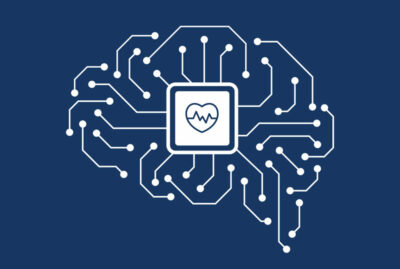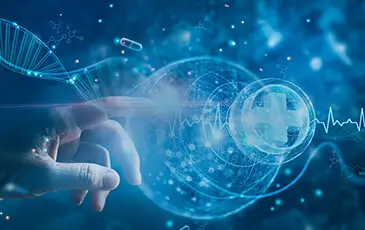
A Real-time NLP-based Clinical Decision Support Platform for Psychiatry and Oncology
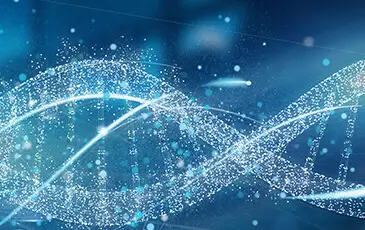
Extracting what, when, why, and how from Radiology Reports

How Roche Automates Information Extraction from Pathology Reports
Clinical NLP in Action
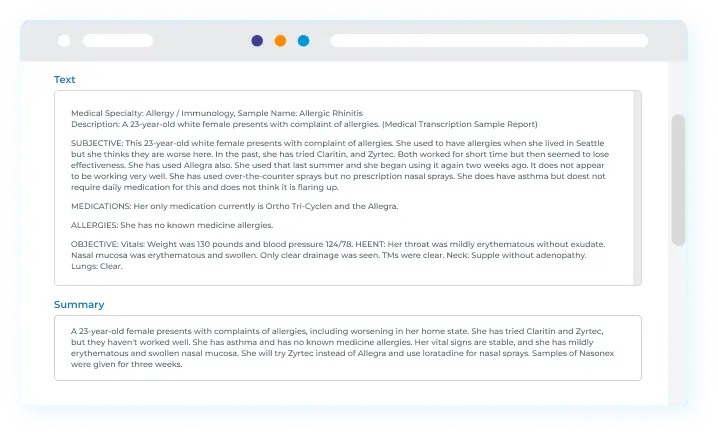
Clinical Notes
Questions
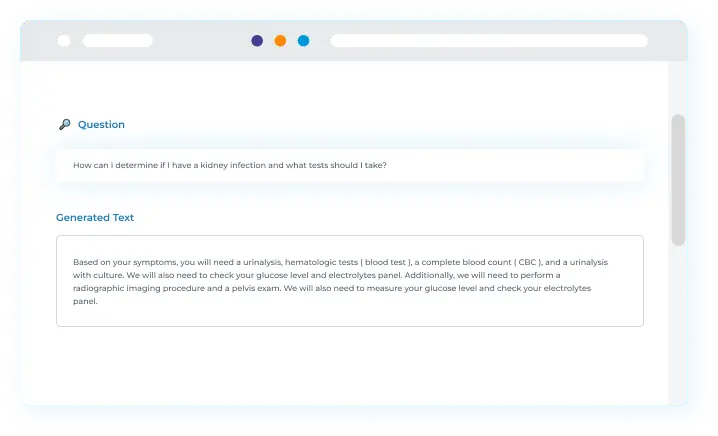
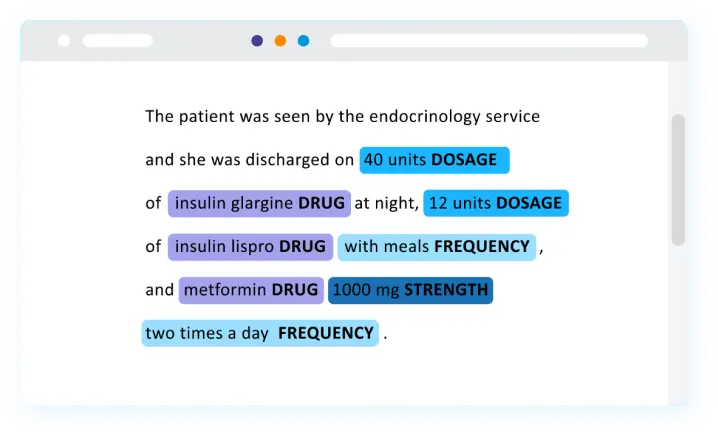
Entity Recognition
Models
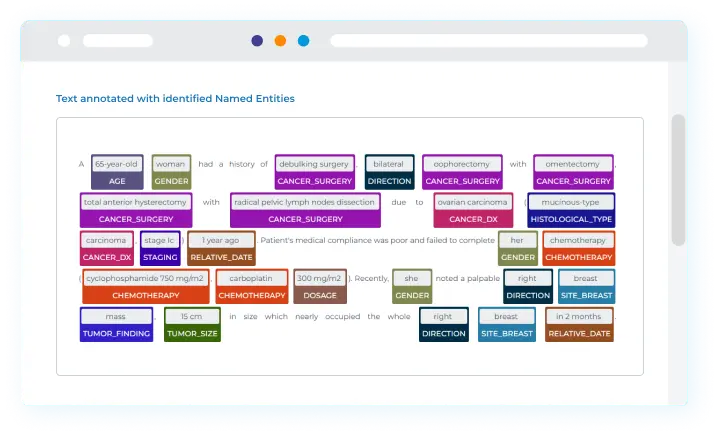
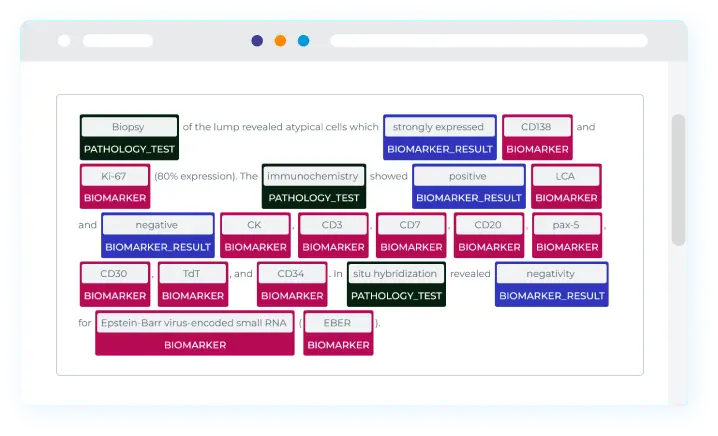
Models
Precision Medicine
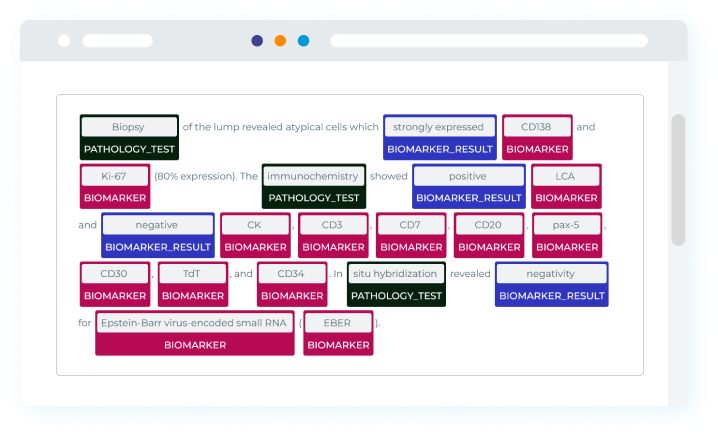
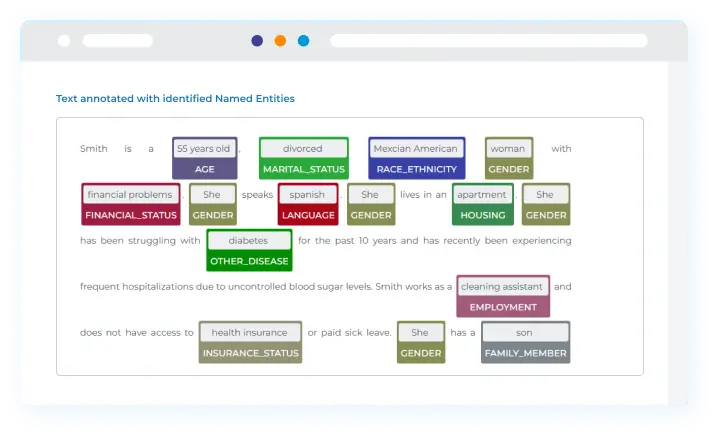
of Health
Patient
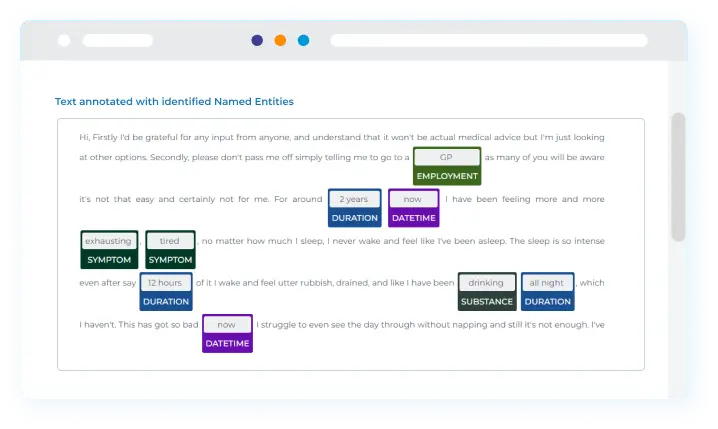
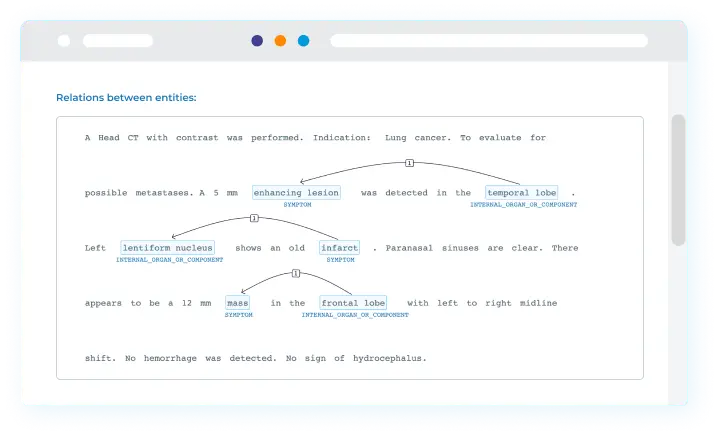
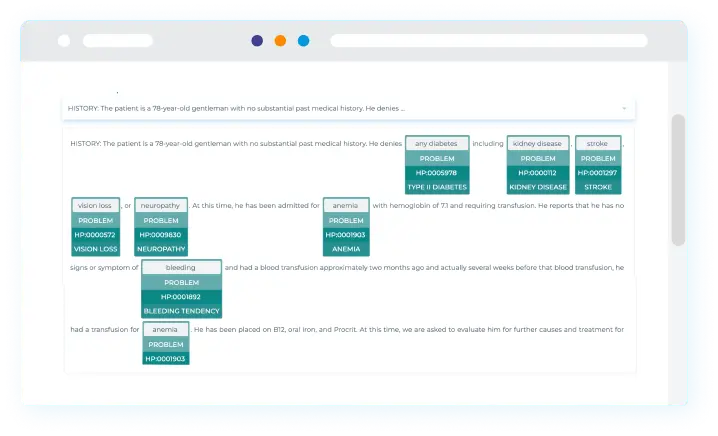
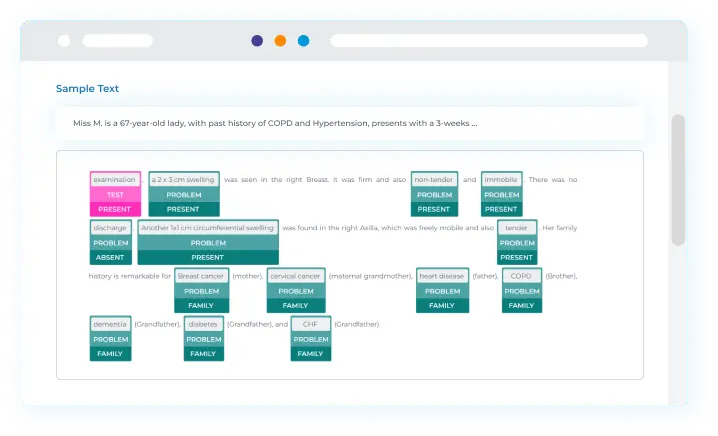
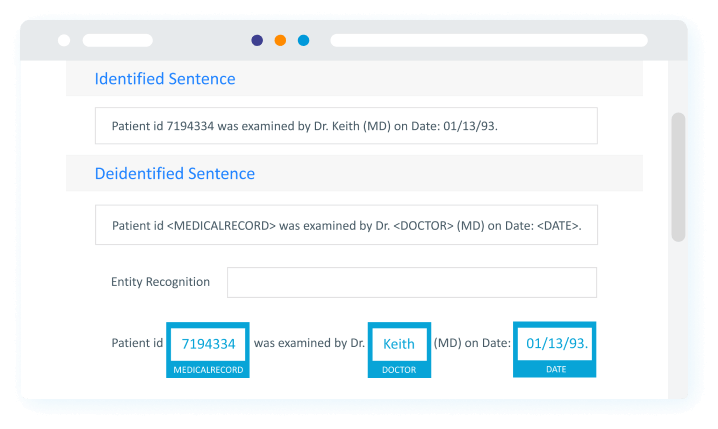
For Data Scientists
Frequently Asked Questions
Efficient Information Extraction: Clinical NLP automates the extraction of essential information from a wealth of clinical notes. This eliminates the need for labor-intensive manual review and data entry, saving time and enhancing accuracy.
Enhanced Decision-Making: By converting unstructured text into organized data, clinical NLP empowers data scientists and healthcare professionals to make informed decisions based on standardized and comprehensive information.
Seamless Data Integration: Clinical NLP seamlessly integrates with electronic health record (EHR) systems, allowing unstructured clinical data to become a valuable part of broader health data analytics. This leads to more holistic insights.
Advanced Data Assessment: NLP techniques applied to clinical data assessment can reveal nuanced patterns and correlations that might not be evident through traditional manual methods. This includes sentiment analysis to understand patient emotions and temporal analysis to track disease progression.
Automated Data Extraction: Clinical NLP automates the extraction of critical data points from clinical notes, such as patient demographics, medical conditions, treatments, and more.
Improved Data Quality: NLP algorithms can identify and rectify inconsistencies and errors within clinical data, enhancing overall accuracy and reliability.
Accelerated Research: By swiftly analyzing extensive volumes of clinical notes, clinical NLP expedites the research process, enabling data scientists to make discoveries and insights more efficiently.
Clinical NLP excels at identifying and extracting specific entities within clinical text, such as medical conditions, medications, procedures, and more. This process, known as Named Entity Recognition (NER), aids in automatically categorizing and tagging relevant information for further analysis and decision-making.
Clinical coding involves assigning standardized codes to medical concepts and procedures. Clinical NLP can automate this process by converting free-text clinical notes into coded data, enhancing accuracy and reducing the time required for coding tasks.
Clinical phenotyping entails identifying and characterizing patient traits, conditions, and features from clinical narratives. Clinical NLP assists in extracting these phenotypic details, facilitating research, analysis, and patient care.
Temporal analysis is crucial for tracking disease progression, treatment timelines, and patient outcomes. Clinical NLP excels at extracting temporal information from clinical notes, enabling insights into the temporal aspects of healthcare data.
In clinical text, negated or uncertain statements can significantly impact the interpretation of information. Clinical NLP identifies negations and uncertainties, ensuring accurate understanding and preventing misinterpretations.
Sentiment analysis in clinical NLP evaluates the emotional tone of patient narratives. This helps healthcare professionals assess patient experiences and emotions, contributing to personalized care.
Clinical NLP aids in efficiently retrieving relevant information from vast amounts of clinical text. It also supports automatic summarization, condensing lengthy clinical notes into concise and informative summaries.
Clinical NLP assists in matching patients with appropriate clinical trials by identifying eligible candidates based on specific criteria within clinical text data.
Identifying adverse events from clinical notes is crucial for patient safety. Clinical NLP can automatically identify and flag potential adverse events, enabling prompt intervention and monitoring.
Clinical NLP bridges the gap between structured and unstructured clinical data. It enables the integration of insights from clinical notes with structured data, creating a comprehensive view for analysis.
Clinical NLP automates the extraction of essential information from clinical notes, which are often lengthy and unstructured. It identifies and categorizes specific entities, such as medical conditions, medications, symptoms, procedures, and more, enabling data scientists to swiftly access crucial data points.
NLP algorithms perform Named Entity Recognition (NER) to locate and label various entities within clinical notes. This process involves identifying and tagging medical terms, dates, anatomical structures, and other relevant entities, contributing to structured data for analysis.
Clinical NLP aids in standardizing medical terminologies within clinical notes. By mapping diverse expressions of medical concepts to standardized terms, it ensures consistency and facilitates cross-referencing for accurate analysis.
NLP techniques can identify relationships between entities within clinical notes. For instance, it can determine the association between a patient's medical condition and the prescribed treatment, offering insights into the patient's healthcare journey.
Temporal information within clinical notes is crucial for understanding disease progression and treatment effectiveness. Clinical NLP can extract and analyze time-related data, aiding in the creation of chronological timelines for patient care assessment.
Clinical notes often contain extensive information. NLP tools can automatically summarize and synthesize these notes, condensing them into concise overviews that retain the essential details for analysis and decision-making.
Clinical NLP bridges the gap between structured and unstructured clinical data. It allows data scientists to combine insights from clinical notes with structured data, creating a comprehensive view of a patient's medical history for holistic analysis.
NLP is employed to identify potential adverse events or complications within clinical notes. Detecting adverse events early helps healthcare professionals take timely actions to ensure patient safety.
NLP assists in matching patients with suitable clinical trials based on eligibility criteria extracted from clinical notes. This streamlines the trial recruitment process and advances medical research.
By transforming unstructured clinical notes into structured data, NLP empowers data scientists to extract data-driven insights, discover patterns, and generate meaningful reports for research, clinical decision-making, and healthcare improvements.
Clinical radiology reports often contain a wealth of information about imaging studies, patient conditions, and findings. NLP automates the extraction of crucial data points, such as imaging modality, anatomical regions, and identified abnormalities, from these reports. This accelerates data retrieval and ensures accuracy.
NLP assists in standardizing medical terminologies used in radiology reports. It maps diverse expressions of imaging findings to standardized terms, ensuring consistency and enhancing data integrity for analysis and comparison.
NLP identifies and tags anatomical entities mentioned in radiology reports, such as organs, structures, and body parts. This enables data scientists to create structured datasets that highlight the specific areas of interest within imaging studies.
NLP algorithms extract findings and observations from radiology reports, providing insights into diagnosed conditions, abnormalities, and potential issues. These findings can be organized and utilized for further analysis.
NLP techniques can identify relationships between findings within radiology reports. For example, it can determine the connection between detected abnormalities and their impact on patient health, aiding in diagnosing and treatment planning.
Radiology reports can be lengthy and detailed. NLP tools can automatically summarize these reports, condensing the information into concise summaries that retain the essential clinical details for quick review.
Clinical NLP bridges the gap between structured and unstructured clinical data. By integrating radiology report insights with structured data, NLP facilitates comprehensive patient profiles that support better treatment decisions.
NLP-driven extraction of information from radiology reports contributes to research initiatives. Data scientists can analyze trends, correlations, and outcomes based on a large volume of radiology data, advancing medical research.
NLP automates certain aspects of radiology report processing, saving time for healthcare professionals. This efficiency can lead to quicker report generation, enhancing patient care and reducing administrative burden.
NLP enables seamless sharing of radiology insights across different medical disciplines. It promotes collaborative decision-making by providing structured data that other specialists can easily comprehend and utilize.
Clinical NLP enables healthcare professionals to swiftly access critical information buried within vast amounts of clinical notes. By automating the extraction of relevant data points, such as patient history, symptoms, and treatments, NLP accelerates the process of retrieving essential insights for timely decision-making.
NLP integrates structured and unstructured clinical data, creating comprehensive patient profiles. This holistic view aids clinicians in understanding the patient's medical history, conditions, medications, allergies, and other pertinent factors that influence treatment decisions.
NLP assists in generating tailored treatment recommendations based on patient-specific information extracted from clinical notes. By analyzing historical data and the patient's current condition, NLP supports personalized and evidence-based treatment plans.
NLP can be configured to monitor incoming clinical notes in real-time. It detects critical findings, abnormalities, or changes in patient conditions and triggers alerts or notifications for immediate attention, enhancing patient safety.
Clinical NLP can extract relevant insights from medical literature and research articles to support clinical decision-making. It provides healthcare professionals with evidence-based recommendations and guidelines for specific conditions.
By analyzing historical clinical notes and data, NLP supports predictive analytics. It helps clinicians anticipate potential complications, disease progression, and outcomes, enabling proactive intervention and better patient management.
NLP identifies potential drug interactions and allergies by analyzing medication-related information within clinical notes. This assists in preventing adverse drug events and ensuring safe medication administration.
NLP enhances the accuracy and completeness of clinical documentation by identifying missing or incomplete information within clinical notes. Complete and accurate documentation supports informed decision-making and reduces medical errors.
NLP automates certain aspects of clinical data analysis, saving time for healthcare professionals. This efficiency allows clinicians to focus more on patient care and decision-making.
Clinical NLP extracts insights from clinical notes for research purposes. Data scientists can analyze patterns, trends, and outcomes from a large volume of clinical data, contributing to medical advancements.
Clinical NLP enables the extraction of valuable insights from unstructured clinical text, augmenting structured data with rich contextual information. This comprehensive data fusion empowers data scientists and clinicians to gain a deeper understanding of patient health, history, and conditions.
By extracting structured data from clinical notes, NLP supports well-informed clinical decisions. Healthcare professionals can access historical and contextual information swiftly, facilitating evidence-based decisions and personalized patient care.
Clinical NLP automates the extraction of pertinent information from clinical notes. This accelerates data retrieval, enabling clinicians to efficiently access critical insights without manually sifting through lengthy narratives.
Clinical NLP fosters patient-centered care by providing a holistic view of a patient's medical journey. This comprehensive understanding allows clinicians to tailor treatments, interventions, and recommendations to meet individual patient needs.
NLP enhances clinical informatics research by extracting data for analysis. Data scientists can delve into patterns, trends, and correlations within unstructured clinical text, generating evidence to drive medical advancements.
Clinical NLP aids in identifying potential issues and complications by analyzing clinical notes. Timely insights help clinicians intervene early, improving patient outcomes and reducing hospital stays.
NLP automates aspects of clinical documentation, enhancing accuracy and completeness. This contributes to reliable patient records and streamlines administrative tasks.
NLP assists in identifying eligible patients for clinical trials by extracting relevant criteria from clinical notes. This expedites the recruitment process, advancing medical research and therapies.
Accurate and structured clinical notes are crucial for regulatory compliance. NLP ensures that clinical documentation meets standards, reducing the risk of non-compliance.
NLP bridges the gap between different medical disciplines by providing structured data that is easily interpretable by various specialists. This promotes collaboration and holistic patient care.






















